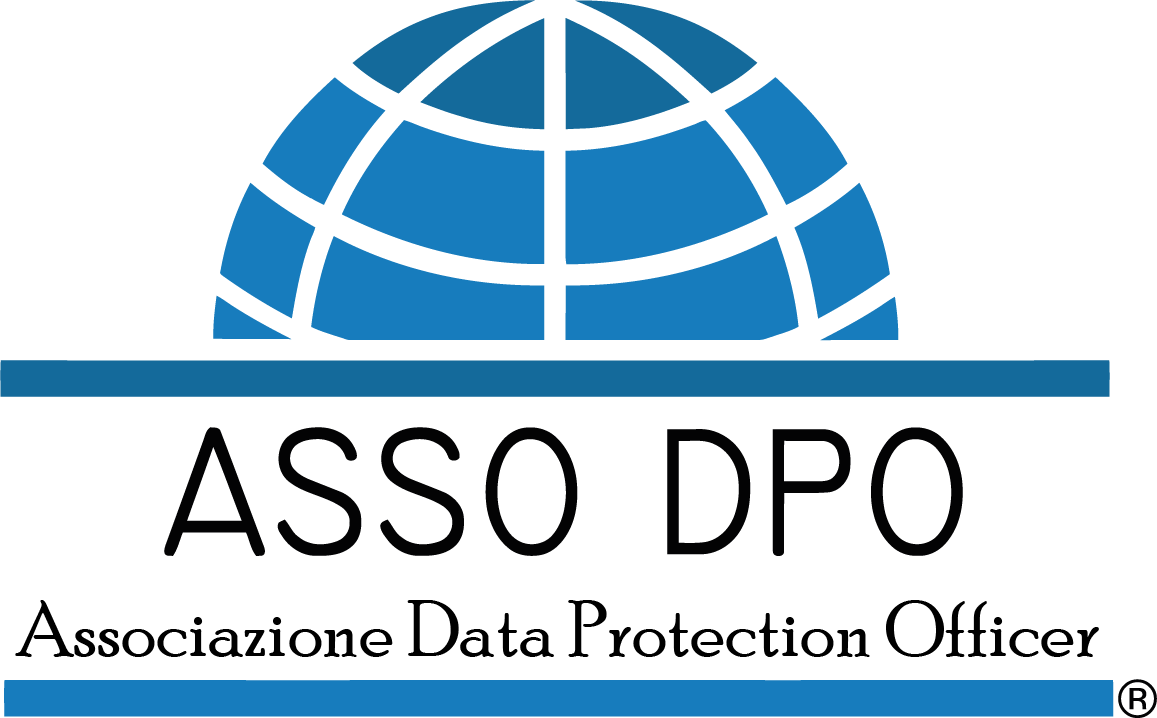For some months now we hear more and more often people talking and writing about the fediverse. Indeed, someone could think that the fediverse is the same as the metaverse and be confused about them.
Nicola Fabiano interviewed by Anna Pouliou | ASSO DPO Scienfic Committee - International Group
1. Introduction
For some months now we hear more and more often people talking and writing about the fediverse.
Indeed, someone could think that the fediverse is the same as the metaverse and be confused about them.
Probably, someone else may not know at all about the fediverse.
The fediverse could seem like a new phenomenon, something strange, a futuristic or fantastic context, or a gaming one.
Given that, we think that it's time to provide clarification about the fediverse to understand its meaning and aspects better.
2. What is the fediverse?
The term "fediverse" derives from the words "federated" and "universe" and constitutes the set of federated software resources of which each one is identified as an instance.
The fediverse is a federated computer network among server and software applications that allows users to exchange information by using the same or similar protocols.
3. What is the instance in the fediverse?
Let's imagine that you install on your server a software resource like Mastodon; at the end, you will have an instance, a Mastodon instance in the fediverse.
There might be some confusion about the instance because someone might recognize it exclusively by the server where software applications are installed. Indeed, it seems that the fediverse users or the "fedizens" (from "fediverse" and "citizens", we want to refer to people who use and live the fediverse) usually talk about instances referring to a specific software application like Mastodon, Lemmy, etc.
4. What is the fediverse not? Differences between the fediverse and the metaverse
The fediverse is not:
- artificial intelligence;
- web 3.0;
- quantic computer;
- virtual reality;
- augmented reality.
The fediverse is not the metaverse.
In 1992, science-fiction author Neal Stephenson coined the term "metaverse" in his hit novel "Snow Crash.", referring to a "convergence of physical, augmented, and virtual reality in a shared online space.". The term metaverse is the union of "metaphysics" and "universe." (Metaphysical Universe).
Since Stephenson's creation, that term has been used to refer to a virtual reality where people act like in real-life with any kind of consequences, even legal.
Recently, we know that Facebook changed into Meta; now, all turn around the metaverse as something special created by Meta, but we know that it isn't because we cannot ignore the origin of the term "metaverse".
5. When was the fediverse born?
The fediverse is not a current phenomenon but has rather existed for years.
Indeed, the fediverse is traced back to 2008, corresponding with the foundation of the social network identi.ca.
There are a lot of resources on the Internet related to the fediverse; among them, we want to mention a map retrieved from the Joinfediverse.wiki, defined as "an encyclopedia dedicated to all Fediverse".
That map, unfortunately not updated to date, describes well the fediverse origin and its evolution from 2008 till 2019.
6. What kind of software resources compose the fediverse?
We have discussed about specific software applications which compose the fediverse.
We report a list that is not exhaustive but refers to the most well-known and particularly used resources.
Among those software applications, we mention the most relevant ones:
- Matrix - IM, communicating system and more;
- XMPP - IM, communicating system and more;
- Nextcloud - productivity platform in the cloud;
- Mastodon - social network platform (like Twitter);
- Peertube - social network platform (like YouTube);
- Lemmy - link aggregator (like Reddit);
- Friendica - social network platform (like Facebook);
- diaspora* - social network platform;
- WriteFreely - microblogging.
The above mentioned software applications are all based on the federation concept. To establish a federation and allow interaction among the users, they can use the same protocol or a different one.
Particularly, software resources like Mastodon, Peertube, Lemmy Friendica, WriteFreely, use the ActivityPub protocol which is the subject of the W3C recommendation on January 23, 2018. That protocol allows precisely to realize a federated network so that applications, even different from each other, through the same protocol can interact with each other as a kind of interoperability.
It's important to underline that also XMPP is an open protocol and we talked about it in the article entitled "XMPP: the secure communication protocol that respects privacy". There are several software applications developed by using XMPP protocol and they are mostly used for instant messaging communication.
Worth mentioning Matrix, another open standard protocol that we described in the article entitled "Matrix: the protocol for secure communication that respects privacy".
As you can see, there are some software applications as a social media platform and others for communication and much more.
The fediverse has been particularly popular, especially for social media and microblogging platforms (among which WriteFreely), and is expanding all the time.
However, the fediverse is not only social media and microblogging; it would be highly reductive to consider the fediverse in that sense.
7. What are the characteristics of the fediverse?
There are some characteristics that contribute to describing the fediverse.
Below, we specify the most relevant ones:
a) protocol for a federated system;
The fediverse - a federated computer network - is based on one or more common protocols by which it is possible to share information from one server to another. The federation principle is undoubtedly relevant.
b) Open Source Software;
Software applications for the fediverse are almost all open source. The "open source" concept has been the subject of studies by the European Commission that carried out a study entitled "The impact of Open Source Software and Hardware on technological independence, competitiveness and innovation in the EU economy - FINAL STUDY REPORT", published in September 2021. That study elaborates on the Open Source Software (OSS) and the Open Source Hardware (OSH) and demonstrates how relevant the subject is. Hence, the open-source software in the fediverse is a crucial point that deserves attention.
c) inexistence of advertising;
In general, all the open-source "movement" is aimed at the free use of the Internet and governed by its philosophy which generated the FOSS (Free Open Source Software). Thus, any open-source resources, are, generally, not conditioned by commercial logic, like advertising or profiling. Consequently, users are exempt from any possible hidden tricks underneath the algorithm.
d) inexistence of profiling;
The same argument as in the previous point applies. In general, all the open-source "movement" is aimed at the free use of the Internet and governed by its philosophy which generated the FOSS (Free Open Source Software). Thus, any open-source resources are , generally, not conditioned by commercial logic, like advertising or profiling. Consequently, users are exempt from any possible hidden tricks underneath the algorithm.
e) no vendor lock-in;
The developers do not lock software applications; users are free to use the applications without any particular restriction related to marketing logic.
f) inexistence of cookies except for functional ones.
Regarding web apps or applications accessible by the browser, there are usually only functional cookies and not others. That is in line with the open-source software philosophy and not commercial logic.
8. Has the fediverse grown in recent years and why?
There has been a general increase in federated, decentralized, and open-source systems in recent years.
It is resounding to see how the data and statistics on the fediverse have increased.
Nowadays, people are talking on the Fediverse more than before and spreading it on the Internet. Why?
We think that one of the reasons is the behavior of the European Institutions that chose the Fediverse for their institutional activities.
Indeed, we refer to EUVoice and EUVideo as announced by the EDPS.
There are a lot of social profiles of EU Institutions present in the Fediverse.
That is not particularly surprising but consistent with the European Commission’s adoption on 21/10/2020 of the Open Source Software Strategy 2020-2023.
Another reason could be the maturity level of e-citizens.
From our perspective, many e-citizens woke up their consciousnesses, becoming aware of what a centralized system used for the most popular applications (generally social network platforms) entails.
Probably, those e-citizens moved to the fediverse, becoming fedizens.
9. Why should we care about the fediverse?
We have to care about the fediverse because there aren't only technical aspects, although very fascinating, but also legal issues.
From our perspective, one of the most relevant issue in the fediverse is data protection and privacy, especially in Europe where there is the GDPR.
Nowadays, as Europeans, we are also witnessing a particular scenario where Europe is pushing in an effort to gain digital sovereignty to use it globally and earn a prominent seat worldwide. We perfectly know the legislative output by several "Acts" in the digital sector.
In essence, increasing competitiveness in Europe implies an improvement in both the internal and the global market: sovereignty, therefore, would express supremacy in the market.
In light of this, we should find the correct balance between those measures and digital sovereignty.
In this vast context, we cannot dismiss the fediverse because it is not out of the current scenario. And conversely, the fediverse could probably be an excellent solution to use the Internet by respecting users' rights.
We also believe it's necessary to start a cooperation among all the stakeholders and the European Union regarding the fediverse. That might be the right moment. We must inform people, Internet users, civil society, public bodies, and institutions, all interested in the fediverse, starting training courses or any form of learning.
Remember, you are all already in and not out of any digital resource.
You are fully involved!
10. What are the primary legal issues related to data protection and privacy?
Data protection and privacy in Europe are fundamental rights.
There is no exception, so we must respect all the legislation, particularly the EU Regulation 2016/679 (GDPR).
The GDPR is a landmark and lays down principles and obligations that apply to "the processing of personal data of data subjects who are in the Union" (Article 3(2) - Territorial scope).
The Internet has no borders. However, where the processing of personal data regards data subjects who are in the Union, also the fediverse is not exempt.
The main data protection issues might be the information to be provided, data protection by design and by default principle regarding the software applications, technical and organisational measures to ensure a level of security appropriate to the risk, etc.
Notably, we highlight the various data protection and privacy regimes for the fediverse users and the system administrators of instances.
That scenario entails maximum attention from the developers, users, and system administrators; we emphasize, at least, the primary role of training and the necessity to carry it out properly.
Undoubtedly, the concern is not only limited to training, but it is necessary to have a broad awareness that enables one to face the challenges of the fediverse correctly.

